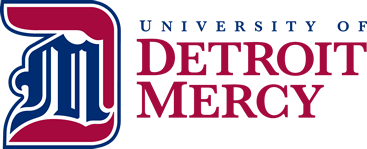Auxiliary to the Archbishop of New York; Director of the National Society for the Propagation of the Faith
Honorary Doctor of Humane Letters
1960
Citation:
On May 24, 1844, the art of human communication after centuries of effort finally broke through the space-time barrier with its first instantaneously recorded message. That message was sent from the Capitol in Washington to the city of Baltimore. The sender of the message was one of America's outstanding scientists. The message was brief: "What hath God wrought?" In those simple words Samuel F. B. Morse announced to a waiting world that the first telegraph line was a success. It was a happy omen that this first telegram was a tribute, not to the cleverness of man, but to the power and wisdom of god. It was indeed an act of adoration. Who will say that this message did not call down God's blessing on man's ceaseless efforts to communicate with his fellow men. Two decades passed, and the new world and the old were linked by the magic strands of the Atlantic cable. More decades came and went, and the human voice, and then the human eye, was able to span the thousands of miles that separated the continents of the globe. The whole world, it is said, has become a neighborhood, but is has not yet become a neighborhood of Samaritans. Radio, television, the cinema - not to speak of the airplane - have conquered the physical distances that in the past separated the members of the human family. However, there is another kind of distance that separates, not nations and continents, but the hearts and minds of men. Ignorance, misunderstanding, suspicion have created chasms of segregation between differing races, classes, and religions. Physical separation has yielded to the wizardry of science, but physical proximity does not of itself cement union of hearts and minds and wills. The arts of communication are among the choicest blessings bestowed on us by Almighty God. But, as with all gifts, the bounty of the Giver can be thwarted by the folly of the recipient. Radio, television, the cinema, and journalism are supremely adapted to achieve their God-given purpose of perfecting and uniting men intellectually, spiritually, socially, artistically. Used wisely, they lead men to share as brothers in the highest and best human values. Yet, these same arts, if prostituted to the service of Mammon, become channels of corruption, dishonesty, and anarchy. The Catholic Church, alert equally to the advantages and to the dangers of these magical arts, urges her sons and daughters to exploit to the fullest the contribution which these arts can make to the service of God and of humanity, and to guard most zealously against their degradation. Tonight the University of Detroit wishes to pay honor to four ever-growing groups of men and women who have dedicated themselves to the spreading of Christian truth through the use, the advancement, and the refinement of the communication arts. These four groups are eloquently represented at the commencement by four men whose brilliant work in their respective fields has not only attracted nationwide attention but has stimulated great numbers of admirers to emulate them in their glorious apostolate. [The four men honored are Monsignor Thomas H. Little, S.T.L, Rev. Louis A Gales, Monsignor John J. Dougherty, Most Reverend Fulton J. Sheen. The citation for each honoree is found alphabetically by his last name.] In the past twenty-five years millions of Americans have had brilliant proof that truth, the eternal truth of God, can be thrilling, captivating, irresistible. Time was when the only access to such truth was through the traditional Sunday sermon heard from a distant pulpit by restive congregations crowded into straight backed pews. Came the days of radio, giving opportunity to millions to hear unusually eloquent preachers addressing willing groups of listeners sitting comfortably in their own homes. Yet radio too had its limitations. The invisible preacher had to forego the advantage which significant gesture and engaging presence could add to the eloquence of his voice. But twelve years ago a new era was ushered in, the era of television. It brought the startling innovation of hearing a new style of homily projected each week from an attractively appointed study, touched off by an eloquent blackboard, tended by an elusive angel. A new technique had come into the Church of God. God's gift of television had found its place in the direct service of His truth. In thousands of neighborhoods across the land Protestants and Jews were able to listen and to find understanding of the beliefs of their Catholic neighbors. They were impressed by the genial personality of Bishop Fulton J. Sheen - a personality that reflected a Christ-like love of his fellow men. Reverend President, for the Honorary Degree of Doctor of Humanities I present the Most Reverend Fulton J. Sheen, Auxiliary to the Archbishop of New York, Director of the National Society for the Propagation of the Faith, philosopher, professor, author, good Samaritan, ambassador of good will, the Chrysostom of television. Commencement, University of Detroit, June 16, 1960.



